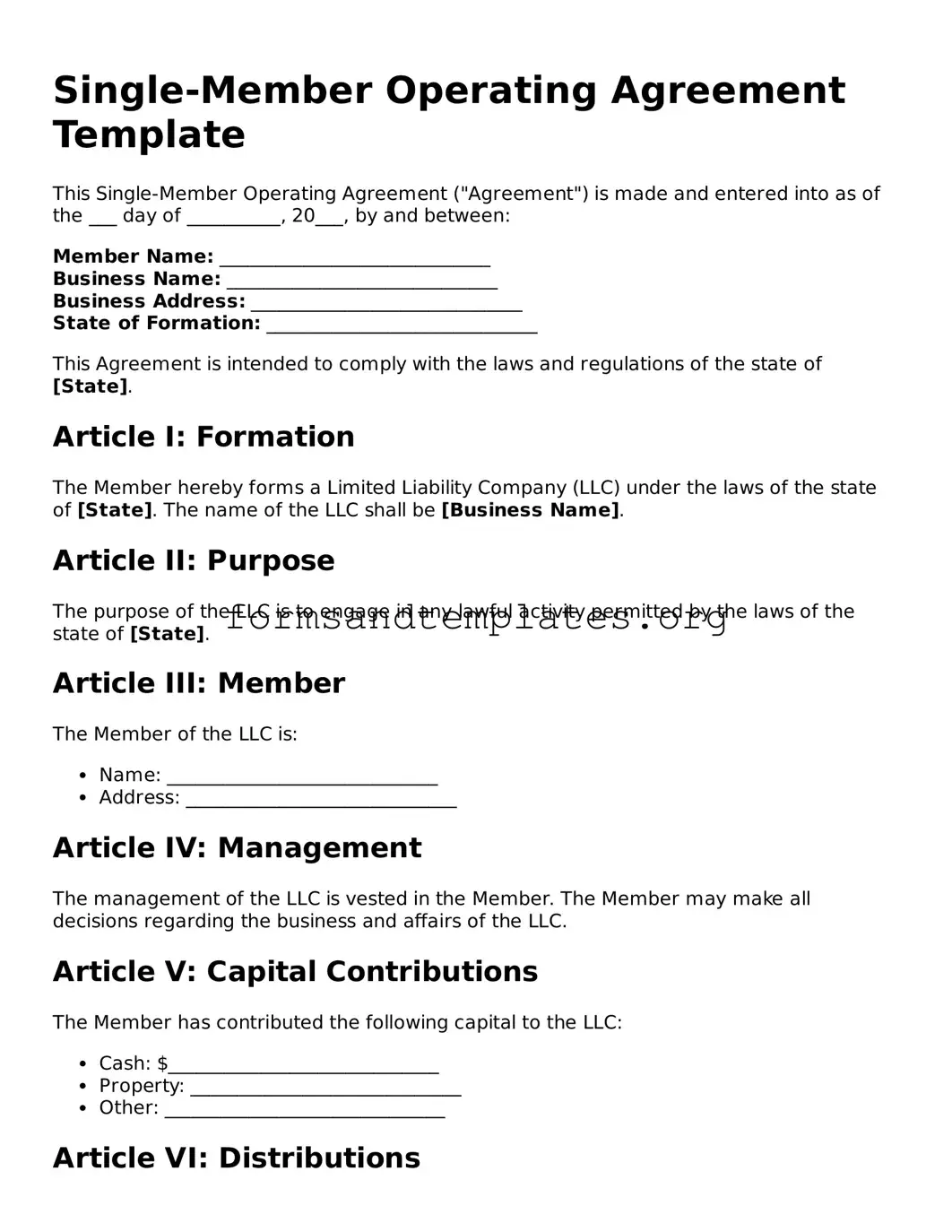Single-Member Operating Agreement Template
This Single-Member Operating Agreement ("Agreement") is made and entered into as of the ___ day of __________, 20___, by and between:
Member Name: _____________________________
Business Name: _____________________________
Business Address: _____________________________
State of Formation: _____________________________
This Agreement is intended to comply with the laws and regulations of the state of [State].
Article I: Formation
The Member hereby forms a Limited Liability Company (LLC) under the laws of the state of [State]. The name of the LLC shall be [Business Name].
Article II: Purpose
The purpose of the LLC is to engage in any lawful activity permitted by the laws of the state of [State].
Article III: Member
The Member of the LLC is:
- Name: _____________________________
- Address: _____________________________
Article IV: Management
The management of the LLC is vested in the Member. The Member may make all decisions regarding the business and affairs of the LLC.
Article V: Capital Contributions
The Member has contributed the following capital to the LLC:
- Cash: $_____________________________
- Property: _____________________________
- Other: ______________________________
Article VI: Distributions
Distributions of profits and losses shall be made to the Member at the times and in the amounts determined by the Member.
Article VII: Indemnification
The LLC shall indemnify the Member against any losses or liabilities incurred as a result of the Member's activities on behalf of the LLC, to the fullest extent permitted by law.
Article VIII: Amendments
This Agreement may be amended or modified only by a written agreement signed by the Member.
Article IX: Governing Law
This Agreement shall be governed by and construed in accordance with the laws of the state of [State].
Article X: Miscellaneous
This Agreement constitutes the entire understanding between the Member and the LLC. No other agreements or understandings, whether written or oral, shall be binding unless signed by the Member.
IN WITNESS WHEREOF, the undersigned has executed this Single-Member Operating Agreement as of the date first above written.
Member Signature: _____________________________
Date: _____________________________
